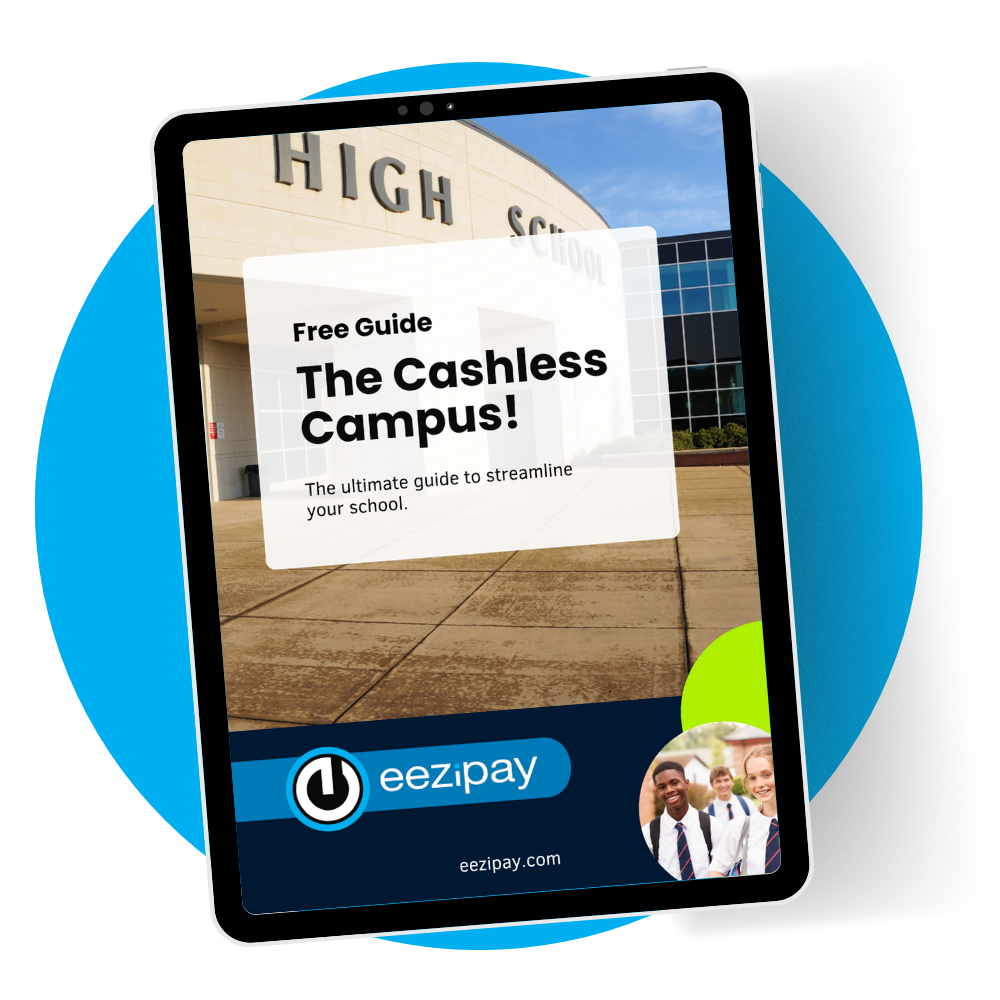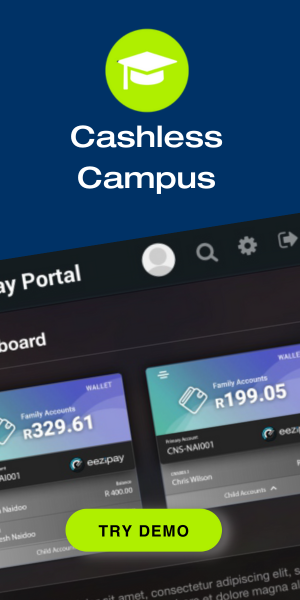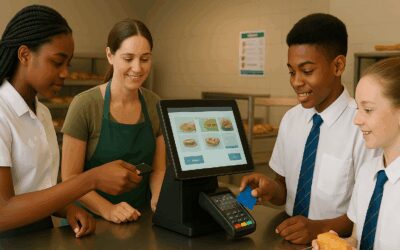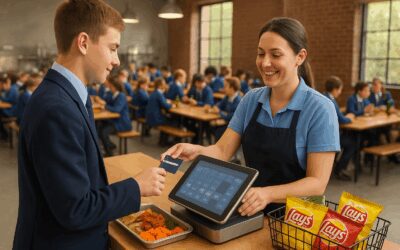Introduction
Imagine if school lunches could be booked, paid for, and tracked with just a few taps. This is becoming a reality for many South African schools that are adopting digital meal booking systems.
As security concerns, admin bottlenecks, and outdated manual processes put pressure on school management, the need for digital solutions has never been greater. Platforms that integrate meal booking with cashless payments are reshaping the way schools manage not only food but also all campus transactions, bringing efficiency, transparency, and convenience to students, parents, and administrators.
In this article, we explore seven powerful ways digital meal booking is transforming school life in South Africa, and why it’s fast becoming the gold standard for modern education.
1. The End of Cash on Campus
Handling cash on school grounds is risky and inefficient.
Learners carrying money for lunch are vulnerable to loss, theft, and even bullying. Staff managing cash have to manually reconcile sales, store funds securely, and make deposits at the bank, which introduces both workload and security risks.
With a digital meal booking system, students pre-load funds onto a secure account, which can be accessed via a card, wearable device, or mobile app.
Benefits:
- No physical cash on school grounds.
- Reduced theft and loss incidents.
- Faster transactions with no need for change.
South African schools are already leading the way:
- Allxs – Closed-loop digital wallet with NFC or QR student IDs for tap-and-go payments and meal pre-orders.
- Karri (by Nedbank) – App and card solution with parental controls, daily spend limits, and instant payment notifications.
- TapTuck – Used at schools like Trinityhouse Glenvista, enabling online ordering to cut queues and reduce food waste.
- Eezipay – Deployed in schools and universities, it supports tap-and-go POS, mobile payments, and dietary restriction settings, all integrated into one cashless platform
For a side-by-side look at the leading solutions available to South African schools, read our blog article: Top 8 Best Lunchcard Apps & Cashless Payment Systems for South African Schools
2. Smarter Meal Planning with Real-Time Data
Online ordering means kitchen staff know exactly what to prepare each day.
Instead of guessing quantities, canteen teams can see pre-orders in real-time, reducing food waste and ensuring learners get their preferred meals. Parents can also log in to select meals in advance, thus supporting healthier eating habits and giving guardians more control.
For example, if orders for chicken wraps spike midweek, the system highlights this, allowing stock adjustments. Over time, trends help refine menus, balance nutrition, and manage supplier relationships
3. More Time for Learning, Less Time Queuing
Long queues at break time are more than just an inconvenience—they cut into valuable learning and resting time. With digital meal booking, meals are pre-ordered and ready for collection, significantly reducing queue times.
This not only speeds up service but also improves the overall student experience. Learners spend less time waiting in line and more time enjoying their meals or recharging for the next lesson. For schools, it creates a smoother flow to the day and less crowding around tuck shops or dining halls.
4. Beyond Meals: A Complete School Payment Solution
The best digital booking systems do more than handle lunches. They support multiple school-related payments in one place. These add-ons include:
- School fees
- Uniform purchases
- Books and stationery
- Transport fees
- Hostel payments
- Event and trip bookings
- Laundry and other boarding school services.
It’s an all-in-one cashless payment system tailored to South African schools. For school bursars, consolidating payments into one secure system reduces errors and provides a clear, centralised financial picture. For parents, it means fewer payment platforms and clearer budgeting.It’s an all-in-one cashless payment system tailored to South African schools.
5. Easy Integration with Existing School Systems
Modern meal booking platforms are built for compatibility. Many integrate with school databases and school management systems, meaning rollout doesn’t require a complete IT overhaul.
Whether a school is using SA-SAMS, Ed-admin, or a custom ERP, integration ensures that student data flows smoothly and securely between systems. This also enables advanced features such as blocking orders outside of set times or adjusting menus based on dietary information already in the school database.
These integrations allow:
- Automatic syncing of student profiles and class lists
- Meal ordering linked to timetables
- Bulk uploads for new enrolments
By integrating with existing systems, schools avoid double-entry errors, ensure student data accuracy, and keep rollout times short. This compatibility also supports syncing with timetables, allowing for features such as meal pre-ordering aligned to class schedules.
6. Better Budgeting for Parents
In a cash-based system, parents often have little insight into how their children spend money at school. A digital meal booking system changes that with transparent account tracking and spending controls.
Parents can:
- Set spending limits
- Restrict certain food categories (e.g., energy drinks or sweets)
- View purchase history in real-time
- Top up balances online in seconds
This level of oversight helps teach students better financial habits while giving parents confidence in how their money is being spent at school. For boarding schools, it also ensures that allowances last longer and are spent more wisely.
7. A Proven Solution in South African Education
While adoption is growing in primary and high schools, some universities have also embraced digital meal booking for specific contexts. The University of Cape Town, for instance, uses Pay Connect in its residences to manage prepaid meal credits, streamlining operations and providing students with a simple, cashless way to dine.
While limited to residence dining halls, this example demonstrates how structured meal booking can enhance efficiency and accountability in high-volume food service environments—principles that are just as relevant to school canteens.
The Future of School Payments Is Digital
From reducing cash risks and improving nutrition planning to cutting queues and enabling all-in-one school payments, digital meal booking offers clear advantages for both school administrators and families.
South Africa’s shift toward cashless, digital-first solutions means schools adopting these systems now will be ahead of the curve and better prepared to meet the expectations of modern learners and parents.
Eezipay’s meal booking solution is one such platform designed specifically for South African schools. With integration options, parental controls, and real-time reporting, it helps institutions create a safer, more efficient, and more transparent food service environment.
Ready to bring the benefits of digital meal booking to your school?
Contact Eezipay today to learn how your canteen can go from queues and guesswork to speed, accuracy, and convenience.






![How QR Code Payments Are Powering a Brighter Future for Universities [2025]](https://eezipay.com/wp-content/smush-webp/2025/05/QR-Codes-Payments-For-Universities-400x250.png.webp)

